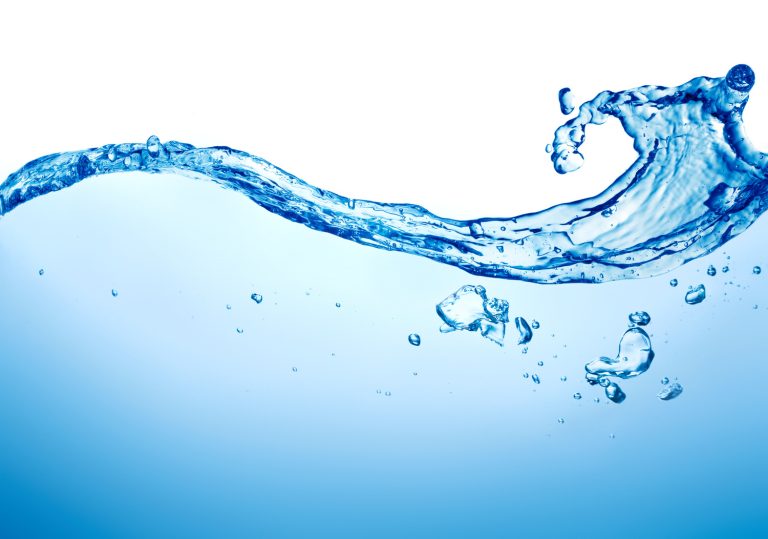
Rand Water abstracts, purifies and sells bulk (wholesale) water to all municipalities in Gauteng and parts of Mpumalanga, Free-State and the North-West Provinces. Gauteng Municipalities consume the highest volumes of water (above 80%) produced by Rand Water systems. Municipalities have been allocated specific quotas in line with the abstraction limits set by the Department of Water and Sanitation.
Figure 1 below: depicts the declining Rand Water storage systems – shown by the red solid line. The decline can be observed from the 22 August 2025. Rand Water continues to pump and supply at maximum capacity; however, storage is declining rapidly owing to high-water withdrawals by Municipalities.

Gauteng Municipalities
It is important to highlight that Rand Water supplies 77% of water produced to the cities of Johannesburg, Tshwane and Ekurhuleni. Figures 2 and 3 below: show water consumption higher than the allowable quota (depicted by the solid red line) for the cities of Johannesburg and Tshwane, respectively.

The consumption pattern observed from the City of Johannesburg, as reflected in Figure 2 above, shows an upward trend and is way above the target licensed quota, putting the system sustainability at risk.
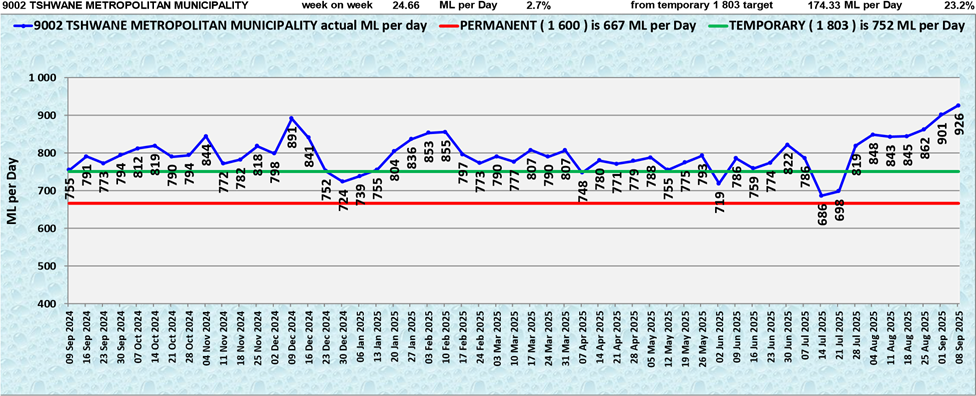
The City of Tshwane is withdrawing way above the licensed targeted quota and the trend is showing a negative shift, putting the system’s sustainability at risk. In the City of Tshwane, there are other water sources which have unfortunately been performing sub-optimally. The City has engaged Rand Water to assist with these plants (Rietvlei and Roodeplaat).
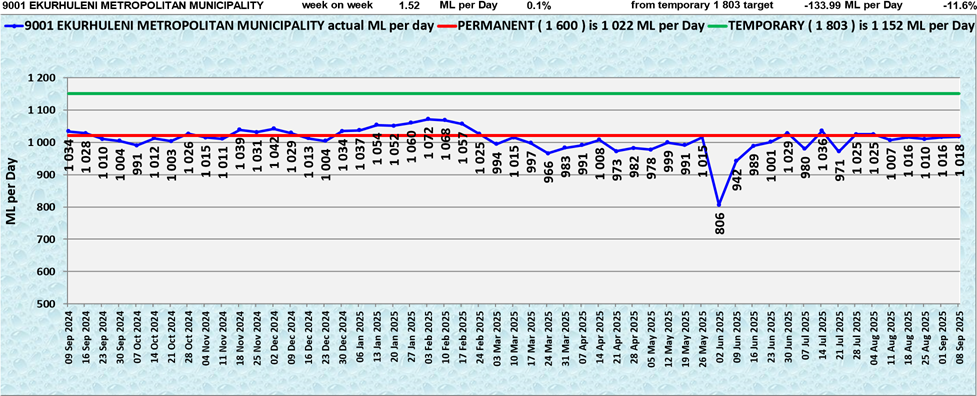
City of Ekurhuleni’s consumption remains stable and in line with their licensed targeted quota. The water conservation efforts in Ekurhuleni are yielding positive results and that is seen in their consumption patterns, see figure 4 above.
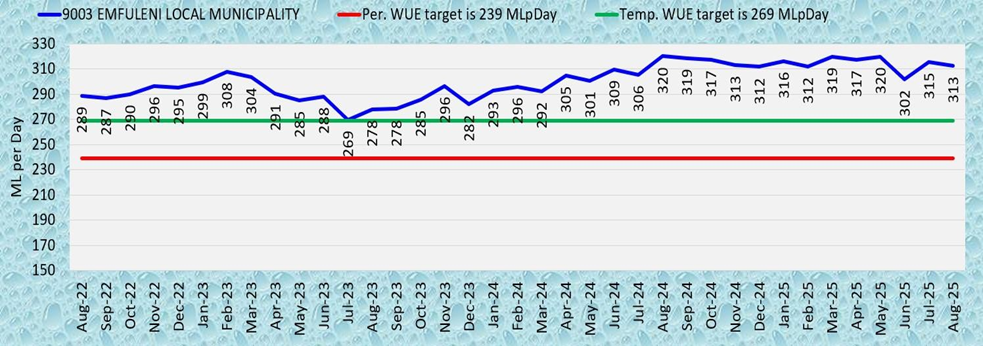
The Emfuleni Local Municipality is amongst the highest consumers and is experiencing rising water losses owing to aged infrastructure. The municipality is consuming above the licensed targeted quota, as shown in figure 5 above.

Mogale City’s consumption remains below the temporary targeted quota but still above the permanent licensed target. Figure 6 above: shows the consumption patterns of Mogale City.

Midvaal’s consumption was showing a positive trend towards the licensed targeted quota. It has however started showing a negative shift. Figure 7 above: shows consumption figures that are above the licensed target quota for the month of August.
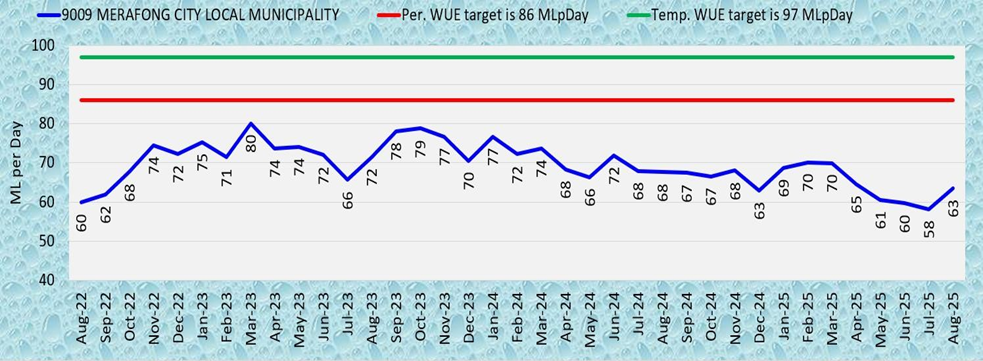
Merafong and Rand West Municipalities are consuming well below their allocated quotas as can be seen in figures 8 (above) and 9 (below).
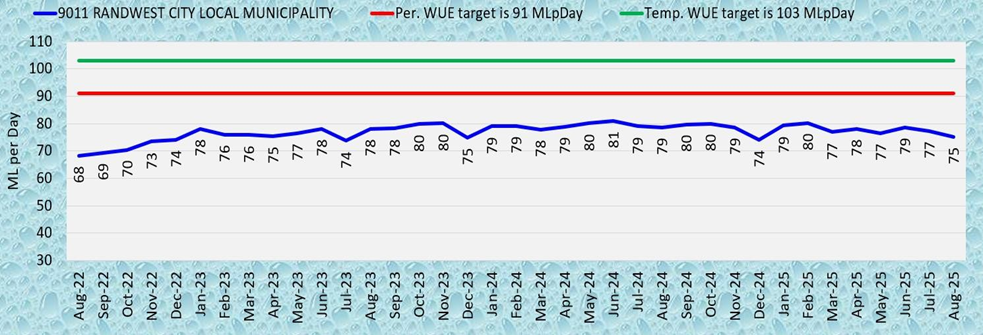
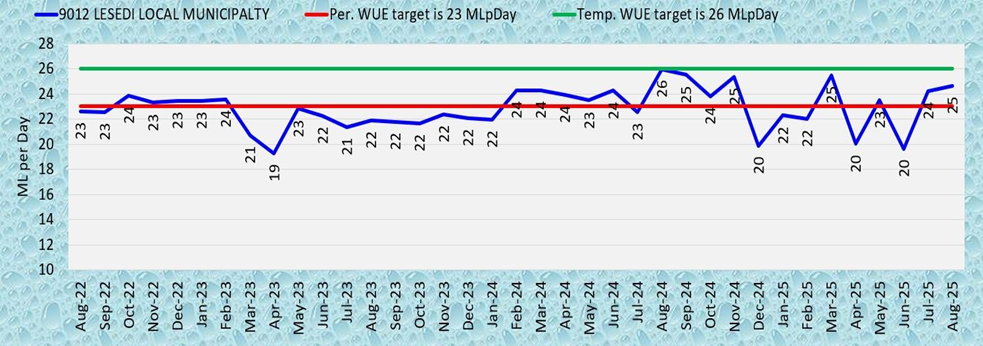
Lesedi Municipality, albeit in low volumes, consumes below the temporary target but are still above the permanent license targeted quota. The consumption of Lesedi is considered high as it needs to be below the red line. Figure 10 above shows the consumption figures of Lesedi Municipality.
Free-State Municipalities
In the Free-State, consumption is generally very low and mostly in line with the allocation. Although Rand Water monitors all the systems, there is no particular emphasis in Free-State since volumes are low when compared to other customers within the Rand Water area of supply.
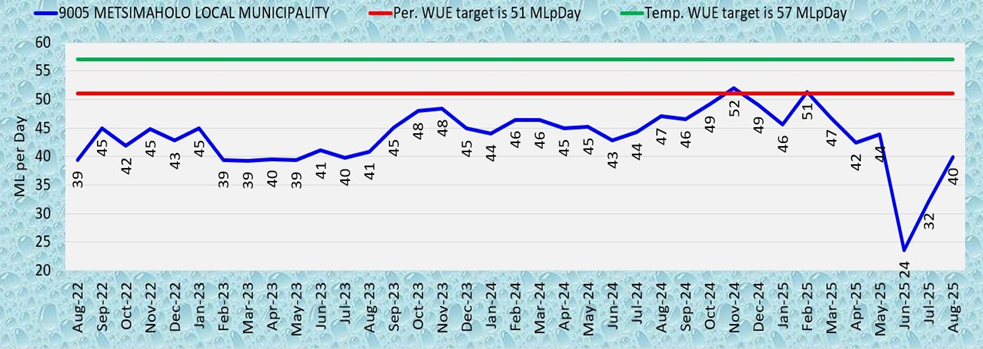
Figures 11 (above) and 12 (below) reflect low consumption levels of the Municipalities in the Free State. The municipalities have performed well over the years and do not pose any risk to the system’s instability.

North-West Municipalities
Rustenburg is consuming above the licensed targeted quota. However, the trend is positive and shows a declining consumption. Figure 13 below shows the consumption pattern of Rustenburg over the past three (3) years.
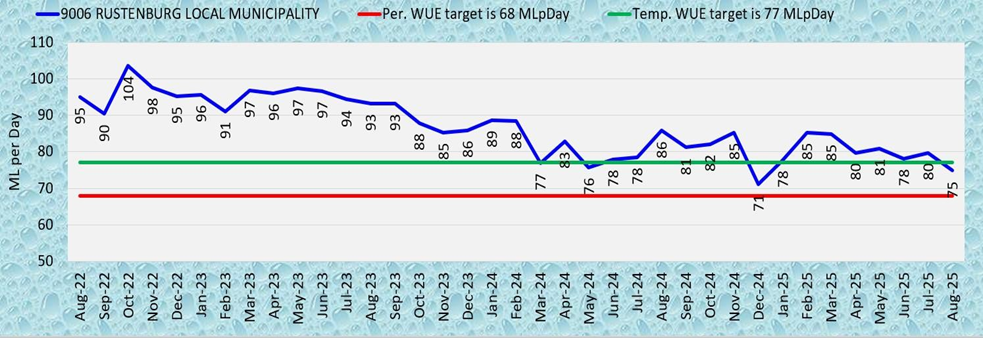
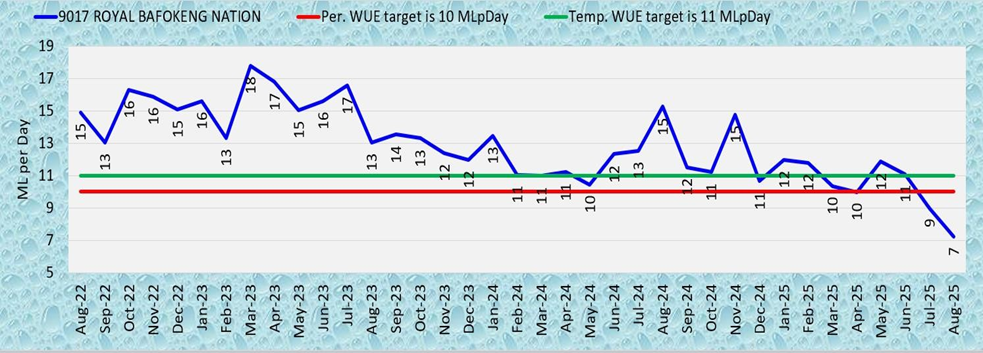
Royal Bafokeng Administration (RBA) is not a standalone Municipality. However, Rand Water recognises the RBA as an independent customer within the Rustenburg Local Municipality. Royal Bafokeng’s consumption has been above the licensed targeted quota, however it has decreased due to reduced supply from the Magalies System, see figure 14 above.

The other municipality serviced by Rand Water in the North-West Province is the Madibeng Local Municipality. Figures 15 shows the municipality is consuming above the licensed targeted quota, putting the system’s sustainability at risk.
Mpumalanga Municipalities
In Mpumalanga, Rand Water provides water services to three (3) local municipalities, namely Govan Mbeki, Victor Khanye and Thembisile Hani. Govan Mbeki’s consumption, as reflected by figure 16 below, remains below the allocated quota.
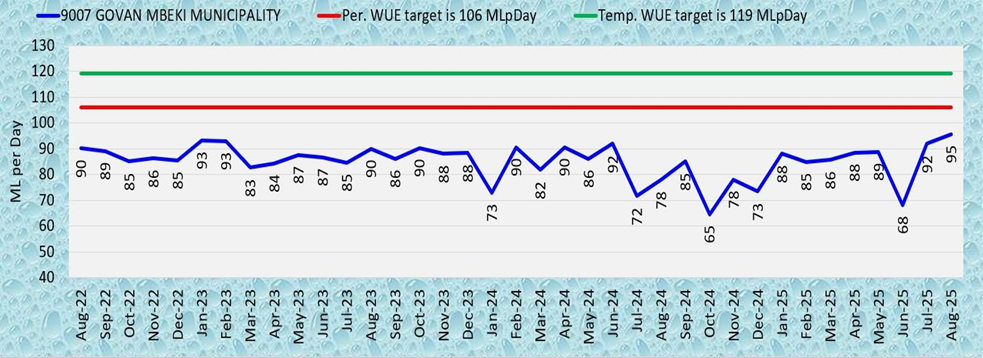
On the other hand, both Victor Khanye (Figure 17 below) and Thembisile Hani are over consuming. However Thembisile Hani performs slightly better, it is still marginally over-consuming as seen in figure 18 below.

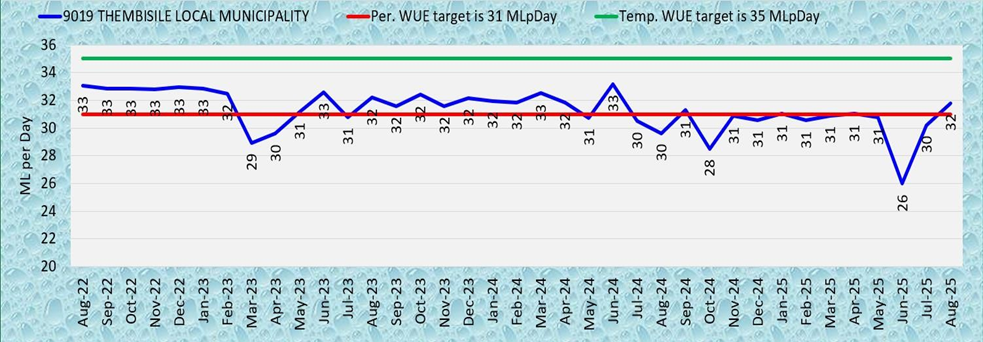
Rand Water therefore, calls on ALL the over-consuming customers to reduce their consumption in line with allocations to avoid system collapse, which will inevitably affect other customers as well. The water systems are interlinked and high consumption in one area impacts the sustainable provision in other areas. Water conservation is a joint responsibility that must be observed and practised by ALL to ensure a sustainable and equitable supply to customers.